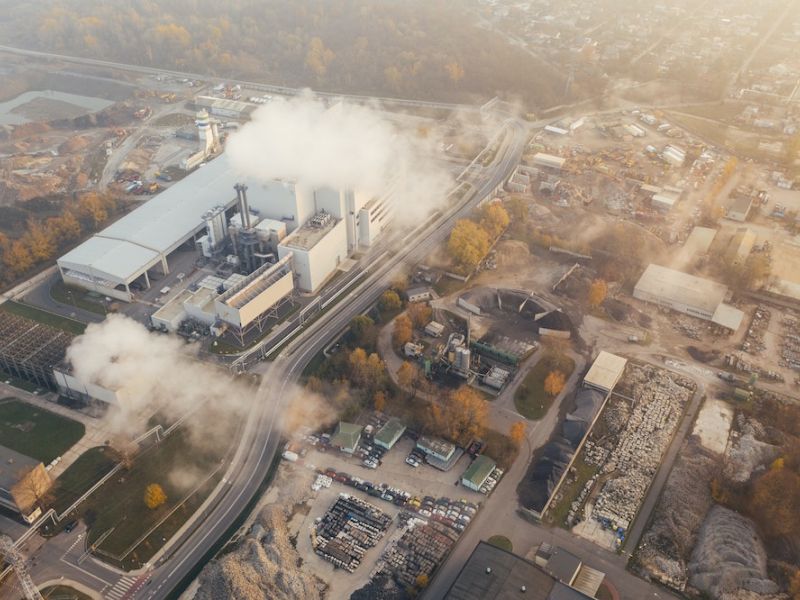
How to effectively measure the Carbon Footprint of your Business
Thanks to the United Nations Climate Change Conference (COP26) and the publicity surrounding it, climate change is back at the top of the political agenda for the majority of countries around the globe. These countries are taking action in an attempt to prevent rising CO2 levels from potentially generating a planetary emergency.
Part of the solution is for businesses to reduce the quantity of CO2 they emit. However, in order to do that successfully, businesses need to measure their carbon output which isn’t always easy.
If you want to calculate your business’s carbon footprint, this post is here to help. We describe a helpful methodology you can use to measure your CO2 output and assess your progress towards your carbon neutral goals.
Why Measure Your Business’s Carbon Footprint?
There are a few main reasons to measure your business’s carbon footprint:
1. To improve your brand image
According to a study by Global Data, 45 percent of shoppers say that they want to buy products that are better for the environment. Another 2019 YouGov study found that 67 percent of 9,000 surveyed consumers want a label on products that affirms a brands’ commitment to the environment. Therefore, if consumers know that they are buying from companies that take climate change seriously, they may be more likely to buy from them.
2. To identify cost-saving opportunities
Cost-saving is another major reason why companies care about measuring their carbon footprint. There are often significant opportunities to reduce your expenses when you go green. The New Climate Economy estimates that moving towards green solutions could save the global economy nearly $26 trillion by 2030. That’s around 25 percent of global GDP in 2020.
3. Meeting Regulatory Requirements (or preparing for future ones)
It is vital to know your carbon footprint if you are obliged to report on your carbon emissions. As we move closer to the UK government’s net zero goal by 2050, more industries are likely to make this a requirement. Currently, any company with over 250 employees or an annual turnover of more than £36m, or an annual balance sheet of over £18m, are required to comply with the Streamline Energy and Carbon Reporting (SECR) regulations. Calculating your footprint forms a part of this reporting energy legislation.
How To Calculate Your Business’s Carbon Footprint
Choose What You Want To Include In The Calculation
Companies typically use The Greenhouse Gas (GHG) Protocol to decide what they want to include in their carbon footprint calculation. It is a set of procedures and tools designed to standardise the measurement of direct CO2 emissions (and those embodied in their goods).
The GHG Protocol splits GHG emissions into three categories: scope 1, scope 2, and scope 3. These are different ways your business can calculate CO2 emissions.
Scope 1
Scope 1 is the most basic. It solely measures direct GHG emissions from your operations. For example, it includes emissions from fossil fuel (such as gas) that you burn on-site, company-owned vehicle usage and leaks of refrigerants from your air conditioning or freezer units. It does not include any secondary CO2 emissions that result from conducting your operations (such as CO2 emissions that colleagues generate on their daily commute to the office).
In summary, scope 1 includes:
-
- Company facilities
- Company vehicles
Scope 2
Scope 2 includes both direct and indirect emissions your company generates through the purchasing of energy from third-party providers.
For instance, if you run a factory that uses electricity to run machinery from a local power station, you do not include the utility’s provider CO2 emissions under scope 1. However, under scope 2, you do.
Calculating scope 2 emissions is relatively straightforward. Simply add scope 1 emissions to the carbon footprint implied by your electricity bill. Usually, your provider will give you a breakdown of the CO2 equivalent of the electricity you’ve consumed. If they do not, you may be able to request this from them.
In summary, scope 2 includes:
-
- Purchased electricity, steam, heating and cooling for business use
Scope 3
Scope 3 encompasses all of the CO2 emissions (or equivalent) that occur because of your business operations, such as the CO2 implied in capital good usage and employee commuting.
Therefore, scope 3 is the most encompassing. It provides greater insight into the real impact that your operations are having on the environment. By contrast, scopes 1 and 2 are the easiest to control.
Calculating scope 3 emissions may be more beneficial than using either of the other tools. Because it is so broad, it helps to build trust with your customers. It shows a commitment to transparency about the full climate impact of your operations.
In summary, scope 3 includes:
-
- Purchased goods and services
- CO2 released to the atmosphere by waste
- Emissions related to goods and services that customers purchase
- Capital goods
- Fuel and energy-related activities (such as the energy involved in the extraction of coal from the ground and transporting it to the utility provider)
- Business travel (such as international flights)
- End-of-life treatment of sold products
- Leased assets
- Franchises
- Company investments
- Transportation and distribution
- Employee commuting
Identify The Sources Of Emissions
The next step is to calculate the sources of emissions. The burning of fossil fuels is one obvious source, but as you can see from the above discussion, there are many others.
The easiest way to do this is to compartmentalise each CO2-generating energy source you use both directly and indirectly. Direct sources might include fossil fuels that you burn onsite or fuel you put into your fleet vehicles. Indirect includes the electricity and gas from utility suppliers.
Collect Data On Quantities
When calculating quantities, you need to measure total carbon dioxide (CO2) emissions plus emissions of other gases that are also shown to trap heat in the Earth’s atmosphere. Therefore, any measurement of your carbon footprint should also include:
- Methane (CH4)
- Nitrogen trifluoride (NF3)
- Perfluorocarbons (PFCs)
- Hydrofluorocarbons (HFCs)
- Nitrous oxide (N2O)
You don’t have to measure each of these chemicals separately. Instead, you can convert them into CO2 equivalents using global-warming potential (GWP).
Here are the GWPs for the above gases:
- Methane: 12.4
- Nitrogen trifluoride: 17,200
- Perfluorocarbons: 7,390 – 17,340
- Hydrofluorocarbons: 12 – 14,800
- Nitrous oxide: 298
Where there is a range, you will need to check the exact GWP for the chemical you are emitting. For instance, the hydrofluorocarbon fluoromethane has a GWP of 92 while HFC-23 has one of 14,800.
You can find out how much of each you’re using from electricity and gas utility bills, data from your own production (if you are releasing other greenhouse gases), and fuel receipts.
Put this information into a spreadsheet and use formulas so that you can easily convert each type of fuel usage into a CO2 equivalent.
Calculate Your Carbon Footprint
Once you know your total CO2 output or equivalent and what you’re going to include in your calculations, the next step is to work out your business’s impact on the environment.
To start, you’ll need to decide on the accuracy level you will use to make the calculation. Theoretically, you can use average emission factors to calculate CO2 output. However, it is generally better to use site-specific data, since efficiency can vary dramatically from one plant to another.
Check the emission factors most relevant for you. In the UK, Defra provides conversion factors that allow businesses to calculate their GHG emissions from a range of activities, including water consumption, energy use, waste disposal, transport and recycling. Other countries operate similar schemes.
If you don’t like the idea of doing the conversions yourself, Professional Energy Services can calculate this for you. By speaking with our energy consultants we are able to provide you with a calculated footprint. Our existing customers have this data to hand as part of our energy consumption software and carbon reporting tools.
Seek Out CO2 Reduction Opportunities
Once you know where you stand, the next logical step is for businesses to reduce their carbon footprint. Here are just a few ideas:
- Switching to different kinds of transport (such as using rail instead of road for distribution)
- Encouraging employees to cycle instead of using private motor vehicles
- Using a low-carbon energy supplier (an electricity company that sources energy from renewables)
- Adding insulation and LED lighting to your office spaces
- Switching to accredited, low-carbon suppliers
- Cutting down on business travel
- Buying carbon offsets (schemes that allow you to invest in projects that capture CO2 from the environment, such as reforestation)
Build A Process
Lastly, after you complete your first calculation, you’ll want to set up a methodology to make it easy to track your progress over time. You can do this for your business as a whole, or at the product level, using tools available under the GHG Protocol. Note all of the key inputs into your calculations and review them regularly to identify any limitations of your model and how you will improve.
What Next?
You can use the tools outlined above to set your CO2 (an equivalent) carbon emission targets for the next five, ten or even twenty years. In England, the goal is to achieve carbon neutrality by 2050 and in Scotland, it is 2045. With a good GHG accounting system in place, you can quickly see whether your organisation is on track or not. If you would like support in calculating your carbon footprint contact us to speak with an energy consultant who can help.



